When entrepreneurs build successful businesses, they often face a tempting proposition: reinvest all available capital back into the business that’s generating impressive returns. After all, why settle for the seemingly modest returns of a diversified investment portfolio when your business might be generating 20%, 30%, or even higher returns on investment?
This reasoning, while understandable, overlooks fundamental principles of risk management and wealth preservation. Let’s explore why even the most successful business owners should resist the urge to put all their financial eggs in one basket.
The Illusion of Control
Business owners typically feel a strong sense of control over their companies. They make the decisions, set the strategy, and drive performance. This creates an illusion of safety—a belief that business investments are somehow less risky because the owner has direct influence over outcomes.
However, this perception doesn’t align with reality. Every business, regardless of how well-managed, operates in an environment filled with variables beyond any individual’s control:
- Market shifts and economic downturns
- Disruptive technological changes
- Regulatory changes
- Competitor actions
- Industry-specific challenges
- Natural disasters and unforeseen events
The COVID-19 pandemic provided a stark reminder of how quickly external factors can upend even the most successful business models. Restaurants, travel agencies, and event planning companies that had been thriving for decades faced existential threats virtually overnight.
Concentration Risk vs. Diversification
Financial advisors consistently warn against concentration risk—the danger of having too much wealth tied to a single asset or asset class. For business owners, this risk is magnified when personal wealth becomes inseparable from business equity.
Consider these scenarios:
Scenario 1: The All-In Approach
A business owner generates $200,000 in personal income annually and reinvests every available dollar back into the business. After 15 years, the business is worth $5 million, representing their entire net worth.
Scenario 2: The Diversified Approach
Another business owner takes the same $200,000 annual income but allocates 40% to a diversified investment portfolio. After 15 years, their business might be worth $3 million, butthey’ve also built a $1.5 million investment portfolio.
While the all-in approach appears to create more wealth on paper, the diversified approach offers significantly more security and flexibility.
The Retirement Equation
Business owners often view their companies as their retirement plans, expecting to fund their golden years by eventually selling the business. This strategy carries several hidden risks:
- Timing Uncertainty: You might need to sell during unfavorable market conditions.
- Valuation Discrepancies: What you believe your business is worth may differ significantly from what buyers are willing to pay.
- Industry Consolidation: Changes in your industry might reduce the pool of potential buyers.
- Exit Strategy Complications: Building a business that’s attractive to buyers requires different strategies than maximizing short-term profits.
A diversified investment portfolio provides a safety net independent of business value and can generate income regardless of whether or when you sell your company.
Personal Financial Resilience
When business and personal finances are completely intertwined, business difficulties immediately translate to personal financial crises. This creates unnecessary stress and can lead to poor decision-making during challenging times.
By maintaining separate personal investments, business owners create a crucial buffer that can:
- Sustain their family during business downturns
- Provide capital for unexpected personal expenses without drawing from the business
- Create options if the business fails or needs to be sold at a loss
- Allow for personal financial goals independent of business performance
The Psychology of Risk
Entrepreneurs tend to be comfortable with risk—it’s often part of their DNA. However, there’s an important distinction between calculated business risks and unnecessary financial exposure.
As business owners age and approach retirement, their risk tolerance and time horizon for recovery from setbacks naturally change. A diversified portfolio acknowledges this reality and adjusts accordingly.
Tax Considerations and Efficiency
Diversification also offers tax advantages. Different investment vehicles provide various tax treatments, allowing for more efficient wealth management than keeping all assets within a business structure. For example:
- Retirement accounts like 401(k)s and IRAs offer tax-deferred or tax-free growth
- Certain investments provide tax-advantaged income
- Capital gains treatment outside the business may be more favorable
- Estate planning may be simpler with diversified assets
Finding the Balance
This isn’t to suggest that reinvesting in a successful business is unwise—quite the contrary. The key is balance.
A thoughtful approach might include:
- Establishing a consistent practice of diverting a percentage of income to outside investments
- Creating an emergency fund separate from business capital
- Funding retirement accounts before additional business reinvestment
- Gradually increasing diversification as the business matures and personal retirement approaches
- Working with financial advisors who understand both business finance and personal wealth management
Conclusion
The entrepreneurial drive to build something successful often comes with an emotional attachment that can cloud objective financial judgment. The very qualities that make someone a successful business owner—conviction, focus, and commitment—can become liabilities when applied to personal financial planning.
Even when a business consistently outperforms the market, prudent diversification remains essential. The goal isn’t just maximizing potential returns but creating resilience, reducing vulnerability, and ensuring that the financial security you’re working so hard to build remains protected against the inevitable uncertainties of business and life.
Remember, even the most profitable business represents a single point of failure in your financial architecture. By diversifying beyond your business, you’re not showing a lack of faith in your entrepreneurial vision—you’re demonstrating








